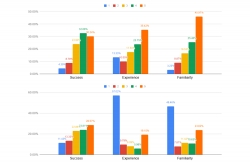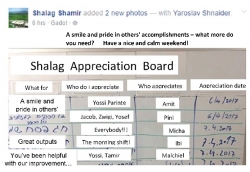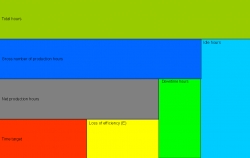In an article I published here some time ago, I addressed the importance of inventory management, directing the movement of materials in the factory from the warehouses to the production floor and back, and a method for measuring the success of your stock management.
This time, we will examine two methods for the supply of materials to the production floor and managing movement of materials in the IT system.
Push or pull?
Pull
The most popular manner for managing materials is to pull them via product trees. Meaning, when the finished product enters the product warehouse or is shipped to customers, the action of reporting on the computer pulls the materials and packaging from the warehouses according to product trees.
Push
The second manner for managing materials is based on a listing of material movement from the warehouses to the production floor, or what we call supply of materials. The warehouse pushes the required quantity of materials onto the production floor.
When this batch is finished and production moves onto the next batch, the materials are returned to the warehouse and the movements are reported in the computer.
Advantages and Disadvantages
Pull method
The major advantage of this first method lies in its simplicity. Every basic system in your factory for managing materials includes a listing of product sold or even of product entering the finished product warehouse.
If we have product trees, where the materials composing the final product are detailed, it is easy to work in the IT system to link the materials requiring movement from the warehouse for production and packing of the product sold or entering the warehouse before sale.
The major disadvantage is the lack of accuracy with this method. Production departments pull materials from the warehouse with no limitations. They have a mission to produce a particular quantity of product for sales and the warehouse will issue them the required materials.
Anything they ask. The reporting system is based on what is meant to be issued, not on what is actually issued.
In addition, the reporting system ignores any product sitting on the production floor during production or pending further action.
Let's say that for some reason, a large quantity of product has been rejected during production. In the meantime, the warehouse issues more materials and we have no information in real time informing us there is a problem.
Best case scenario is that we know product has been rejected, but we don't know how much material has been discarded or how much leftover material has been issued.
With the pull method, we know how much leftover material has been issued only when an accurate stock count is taken, and this usually takes place only once every six months or a year.
With this situation, our ability to respond in resolving any problems decreases to almost zero.
The push method
The principal advantage of the second method, the issuing of materials according to work order, is that it provides control and accuracy for materials.
We know how much product we have manufactured each day or for each production batch, as well as how much raw materials and packaging we should have had to use, and how much we actually used.
Each morning and every week, we can study what took place the day before (or the week before, accordingly), and we can then immediately distinguish any major problems, analyze their root causes and develop corrective action.
The major disadvantage is that this method requires organized management of materials. It is hard to call this a disadvantage, but there is no doubt that this method requires more attention to detail.
However, the return for this extra precision and attention is immediate: less materials lost and more money remaining on our side.
When I managed a large profit center in the past, we would examine the major areas of profit loss or waste every month.
One time, we discovered that a certain, very expensive component used sparingly in each production batch, was being consumed in very large quantities. We set up an improvement team to understand how we had lost so much precious material.
Of course, we rechecked the quantities received from the supplier and reviewed every possibility for theft. In the end, the improvement team found that each time the required quantity of expensive material was measured, it was carelessly and quite freely spilled around the vicinity.
Later on, we moved over to managing our raw materials using the push method and with every production batch, only the exact required quantity (theoretically) of materials was issued.
In this way, the moment there is a sign of major waste and production requires more raw materials, we can immediately check the reasons and our ability to respond improves immeasurably.
Recommendation
I recommend working with the push method, or issue and return of what is required and closing the cycle of raw material flow with every production batch. This may require more careful management, but the positive results will be swiftly noted.












 My First Book: Manage! Best Value Practices for Effective Management
My First Book: Manage! Best Value Practices for Effective Management